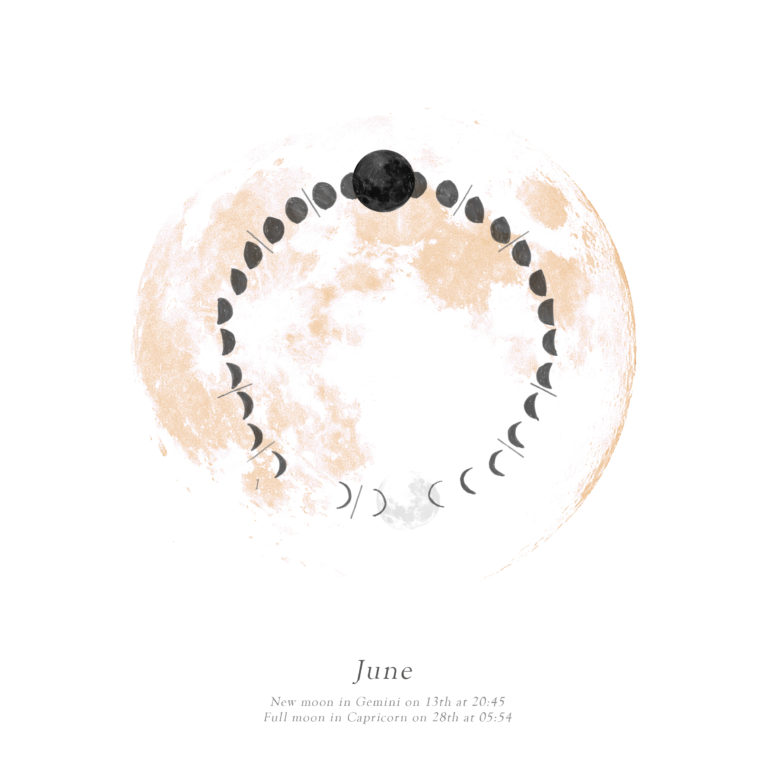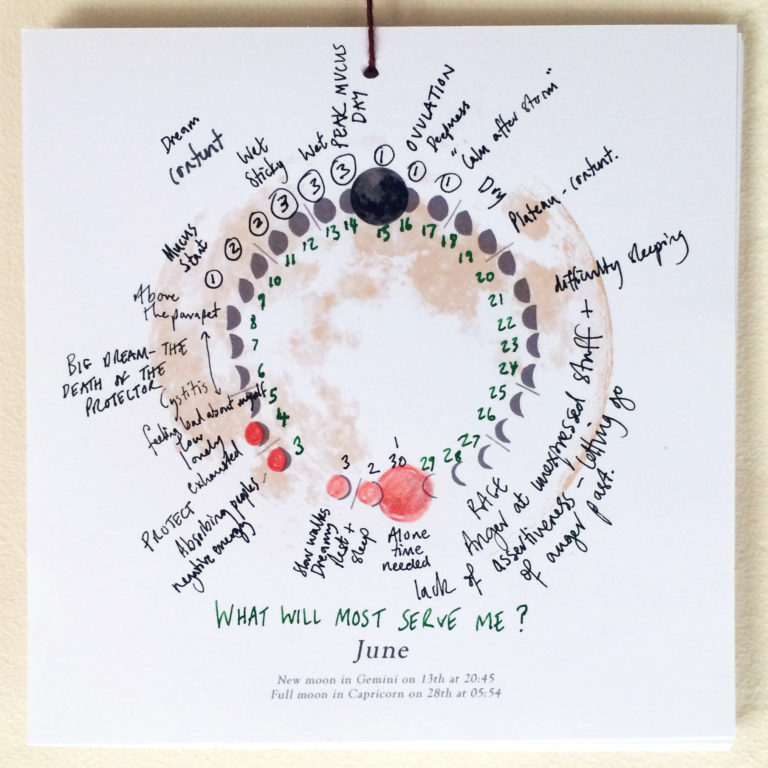The moonlog practice; a call for loving menstrual curiosity

As women living in a patriarchal culture, we’re likely to find ourselves in environments where consistent, linear ways of being are valued most. We may see adverts for menstrual products that show us how easily we might conceal our bleed and ‘carry on like an equal’. Sadly, the dominant cultural message is to keep the subtle, yet powerful shifts we experience throughout our menstrual cycle well hidden.
I have been a bleeding woman sat uncomfortably in the workplace going mad with self-deprecating inner dialogues about how I wasn’t doing enough. My inner rhythms and energy levels were at odds with my external environment and even after 15 years of menstruation, I struggled to welcome my bleed in a way that respected myself and my body. I had convinced myself that I was just too emotional and too sensitive to show up during my bleed as I truly was; a beautiful, fertile young woman who was just not yet able to hear or respond to her menstrual needs.
It took years of watchfulness within to befriend the voices of my internalised patriarch and follow a pathway back to honouring myself through all of the shifts in my hormonal cycle. Becoming more aware with each menstrual cycle, I steadily found the strength and insight to prioritise the wellness of my body and my menstrual needs over external demands. A big part of this work for me was becoming really curious about the natural shifts and flows of my menstrual cycle in a deeply compassionate way. To support this work, I created my first moonlog to track the changes I observed in my mood, physical body, energy levels, creativity and the intensity of my dreams.
After a few cycles, I discovered amazing patterns emerging between the phases of the moon, what was happening in my body and how I was feeling. Over the last 3 years, I gathered enough repeating menstrual information that I entirely restructured my diary and work life to suit my needs during each phase of my menstrual cycle. For example, on cycle days 6/7, I feel most clear-headed and full of ideas so I plan my most creative tasks for then. I know that around days 12-16, when I am most fertile, is when I feel most comfortable being active, being social and doing any public speaking. It becomes incredibly valuable for my family to know that my pre-menstrual mood shift happens on day 23 so they understand that I start to need quiet time ~ and that I get really frustrated and abrupt if I don’t get it! The days around the full moon, when I bleed, are marked as red in my diary in advance to protect the most receptive time of the cycle. This is when I need plenty of rest and solitude and if it is possible, I take this time off work. I always make sure I have some space for the emotions I have been holding through the cycle can be released as I bleed. If I need to work around full moon, I go really gently and with an openness about my bleed. I tell people how I’m feeling and what I need so that I can be there in the most loving way for myself. Learning how to slow down into deep rest during my bleed has been the biggest and most valuable learning for my menstrual health and wellbeing.
It took me many moons of tracking and experience to become this strong and discerning with my needs throughout my menstrual cycle and to soften into truly honouring and celebrating each of its phases. The moonlog hanging on my wall is still now the place I return to every day to honour the deepening awareness of my fertile body. For me, and for anyone experiencing the power of a menstrual cycle, the moonlog practice offers a daily invitation to bring the more receptive parts of ourselves (our feminine) into healthy balance with the more active parts of ourselves (masculine) – and this is something that is so needed in our world right now. I hope you’ll join me and hear the call for more loving curiosity around the incredible shifts you and your beautiful body experience each menstrual cycle.


Different women find unique ways of using the moonlog to suit their life. One woman told me she uses hers as a pregnancy log to record sensations, appointments and her baby’s growth with the moons. The moonlog supported another woman to track cramps, fatigue and trends in her irregular cycles. Her findings empowered her to propose to her GP that her medication was disrupting her cycle. Putting her moonlog in her kitchen allows another woman to engage her family in awareness of her cycle needs. As I have an interest in fertility, I start each log by writing my cycle days inside the moon phases and record my cervical mucus observations to get a visual map of my fertile and infertile phases. Generally, I hear that women using the moonlog notice their perception of time becoming more cyclical as their awareness of the lunar fluctuations of their body grows.
The moonlog practice supports a new cultural message for women to gently invite us to turn back to ourselves: to encourage loving attention back to our beautiful bodies, so that we can understand what we need to create menstrual wellness each day of our unique cycle.